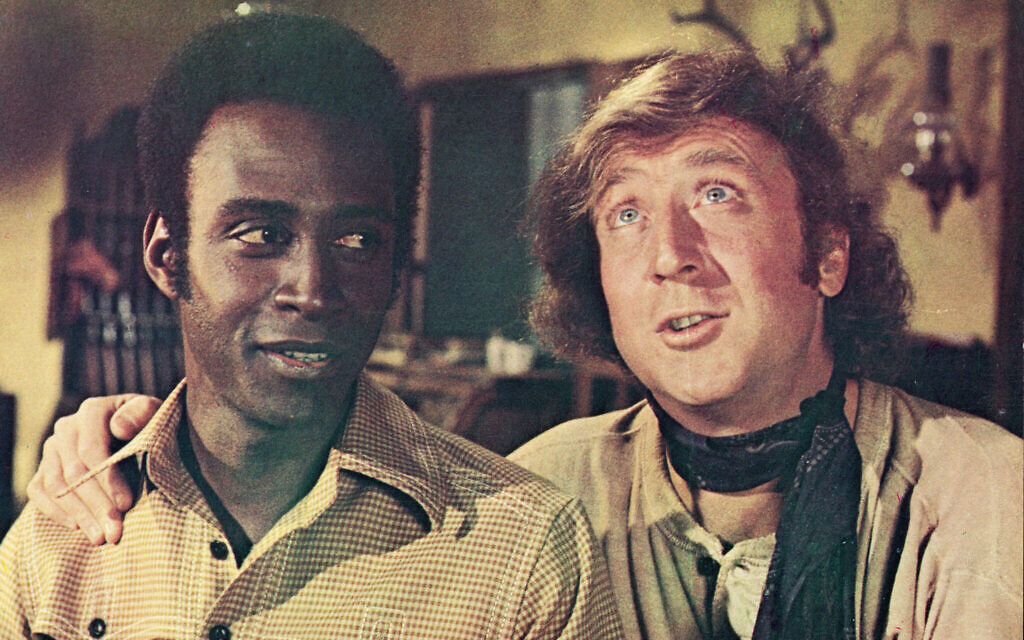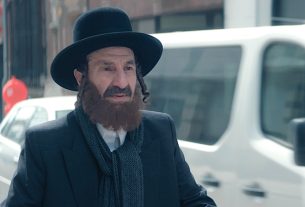((JR)) — The phrase “that movie could never be made today” has probably been said more about “Blazing Saddles” than any other movie in history.
Mel Brooks’ spoof of Hollywood Westerns is full of the N-word and racial and ethnic jokes, and gay stereotypes are played for laughs. There are rape jokes aplenty and more than one reference to a Black man’s endowment. A character punches a horse in the face, and one scene likely broke Hollywood records for sustained flatulence.
Those things, the argument goes, would never be accepted by the sensitive audiences of today, much less greenlit by skittish Hollywood decision-makers.
This may be true. But it’s also true that most of the things that are controversial about “Blazing Saddles” now were just as controversial back when it was first released, 50 years ago this week.
“Blazing Saddles” arrived in theaters on Feb. 7, 1974, as a sharp parody of the Hollywood Western, borrowing and upending the cliches of a classic genre as well as some of the actors who had worked in it. Hollywood’s Hays Code — prudishly dictating what could and couldn’t be done on film — was phased out only six years earlier.
Thomas Doherty, American studies professor at Brandeis University, places the film in the context of the New Hollywood era of the 1970s, including the way the taboo-breaking directors of that period deconstructed established genres like horror (“The Exorcist”), film noir (“Chinatown”) and the gangster flick (“The Godfather”).
“One of the things that made the second golden age of Hollywood so exhilarating is you never knew what Hollywood was going” to throw at you, Doherty told the Jewish Telegraphic Agency.
“It was the first time ever that American cinema (virtually) was free from censorship — so filmmakers were showing things on screen that audiences had never seen before,” he said. “There were few guardrails for race, sex, vulgarity. You could even blaspheme against the sacred genre of the Western — which we had all grown up with and whose generic conventions were knew by heart — with farting around the campfire, saloon gals who really were hookers, and Black sheriffs.”
But there’s another aspect of “Blazing Saddles” that’s timely today: It was made as an anti-racist statement. As Brooks writes in “All About Me!,” his 2021 autobiography, “In ‘Blazing Saddles,’ there’s a very serious backstory. Racial prejudice is the engine that really drives the film and helps to make it work.”
Directed by Brooks and written by a quartet that included both Brooks and comedy legend Richard Pryor, who was Black, “Blazing Saddles” takes place in the 19th-century frontier town of Rock Ridge. The town stands in the way of a railroad that will enrich the politician Hedley Lamarr (Jewish actor Harvey Korman, desperate not to have his name confused with that of the bombshell Jewish actress Hedy Lamarr, who wouldn’t be born for another 40 years). Scheming to drive its residents away, he gets the dim and drunken governor (Brooks) to appoint a Black railroad worker named Bart (Cleavon Little) as the new sheriff, banking that the racist townspeople will clear out.
The all-white residents — all with the last name “Johnson” — react predictably. But soon, the sheriff teams up with a drunk, down-and-out gunslinger known as the Waco Kid (Gene Wilder, sporting an untamed Jewfro under his Stetson) to foil the plan. Eventually, they marshal a multiethnic alliance to defeat a racist army that includes Klansmen and a few anachronistic Nazis. And even the townspeople, up to a point, come around on Bart.
The “Blazing Saddles” poster from 1974 includes the Hebrew for “kosher for Passover” on Mel Brooks’ headdress. (LMPC via Getty Images); Director Mel Brooks (in cap) on the desert set of “Blazing Saddles” as producer Michael Hertzberg (right) assists in setting up the shot. (Warner Bros./Getty Images)
“Blazing Saddles” is a story about politicians and ruthless capitalists seeking to leverage racism in order to make money. It was made in the same year that the Equal Credit Opportunity Act made it illegal for creditors to discriminate based on race, religion and national origin. Every time a modern politician gets elected by leveraging a culture war, with the ultimate goal of helping big business, they’re in a sense reenacting the plot of “Blazing Saddles.”
While “Blazing Saddles” is often described as a movie that “offended everyone,” it mainly denounced people who under the guise of defending “family values” are closed-minded and bigoted. Or, in the famous words of Wilder in the film, “the common clay of the new West — you know, morons.”
Similar to what the late Norman Lear — like Brooks, a Jewish veteran of World War II — was doing on television around the same time with groundbreaking shows like “All in the Family,” “Blazing Saddles” threaded the needle between uproarious comedy and social satire. And it’s that balance, much more than the all-around “offensiveness,” that’s made it the standard to which other satires aspire.
“Blazing Saddles” is one of the great triumphs of one of the top Jewish directors (Brooks) and one of the most beloved Jewish movie stars (Wilder) of the 20th century. And in the fine Brooks tradition, there’s Jewishness sprinkled throughout the proceedings, even if it’s parodying a genre that’s traditionally been mostly devoid of Jews. Before Hedley Lamarr lands on the scheme of hiring a Black sheriff, his henchman Taggert (Slim Pickens) suggests something biblical: “We’ll kill the firstborn male child in every household.”
“Too Jewish,” the politician replies.
Later, Brooks shows up as a Yiddish-speaking Indian chief (a gag, writes Brooks biographer Jeremy Dauber, that suggests a “kind of racial solidarity”). And speaking of Yiddish, the lisping German seductress played by the Jewish actress and Brooks perennial Madeline Kahn was named “Lili Von Shtupp” — her last name Yiddish slang for her favorite activity.
“I think what Brooks might have been doing with both the Black and the Jewish stuff was inserting characters who had traditionally been erased from the Hollywood Western,” Doherty said.
As a Jewish actor, best known at the time for comedies and the title role in “Willy Wonka & the Chocolate Factory,” Wilder was a counterintuitive choice to play a hard-drinking cowboy gone to seed. According to his memoir Brooks had actually approached John Wayne to play the part of the Waco Kid. While the cowboy movie legend was interested, he told the director, “I can’t do it, it’s too dirty. My fans will accept almost anything, but they won’t take dirty,” although he did vow he’d be “first in line to see it.”
With Wilder in the role, Brooks had not only confounded expectations of the gunslinger cliche, but created in Little and Wilder a two-man Black-Jewish alliance.
The big anniversary arrives at an eventful time for Brooks who, at 97, has outlived nearly everyone else involved in the film. (Two of the writers, Andrew Bergman and Alan Uger, are also still alive, as is actor Burton Gilliam, who played Lyle, one of Taggert’s henchmen.) Brooks received an honorary Oscar in January, to go with the Academy Award for Best Original Screenplay he won for “The Producers” in 1969.
“Blazing Saddles” is getting a two-night Fathom Events re-release this September to mark the anniversary. And in March, the new documentary “Remembering Gene Wilder” is set for release in New York and Los Angeles, with more cities to follow. The film about Wilder, which had a run on the Jewish film festival circuit last year, has a segment that tells the story of “Blazing Saddles,” with extensive commentary by Brooks.
In recent years, it’s often been said that modern-day attitudes will eventually lead to the cancellation of “Blazing Saddles.” But this has never materialized. (The network Max, to the chagrin of some viewers, has aired the film with an introduction by TCM host Jacqueline Stewart, putting the film’s language and themes in the context of the day. “Blazing Saddles” remains available on Max, Netflix and Paramount+, as well as VOD channels.)
Brooks, too, is almost universally regarded as a beloved living legend, a link to a legacy of entertainment that extends from the Borscht Belt to Hollywood to the Broadway stage. No less than Barack Obama gave Brooks, and “Blazing Saddles,” his presidential seal of approval, presenting the director with the 2015 National Medal of Arts and reportedly saying that he was “thrilled with the picture” for suggesting that it was possible for a Black lawman to be put in charge.
—
The post ‘Blazing Saddles’ marks a half-century of hilarity — and controversy appeared first on Jewish Telegraphic Agency.




